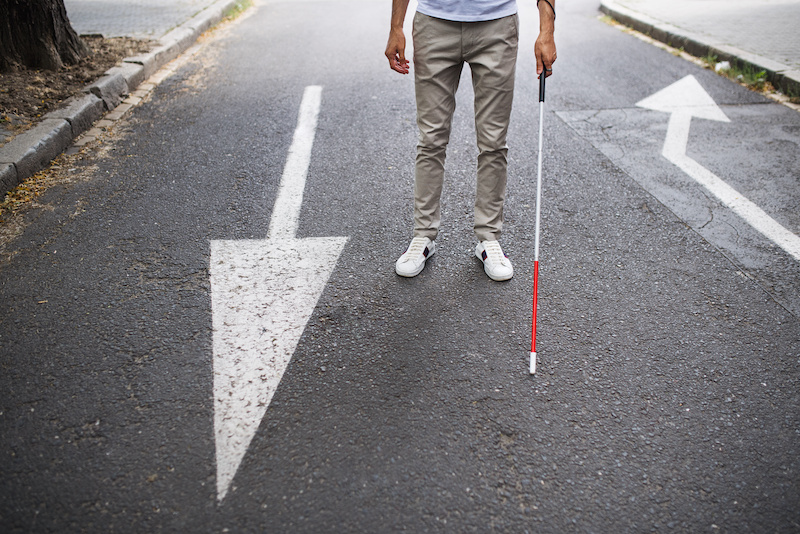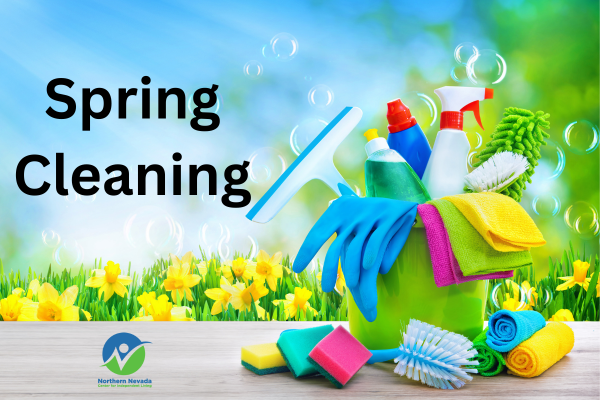October is also officially Blindness Awareness Month, which is officially designated to “bring a heightened focus on the blind and visually impaired community and the realities of living without sight.”
The National Federation of the Blind has taken that a step further, designating October as Blind Equity Achievement Month, which is designed to, “Remember history, advance equality and celebrate accomplishments.”
Mark Tadder, NNCIL’s Blindness Advocacy and Resource Officer, lost his vision in his 40s. He says these designations are important, primarily to remind others that people who are blind or low vision are just as capable as anyone else.
“You can learn skills and techniques to address being blind,” he says. “But it’s a lot harder managing other people and their expectations.” 
Tadder says he has spent too much time pushing back on people who think he can’t do things on his own, or them talking over his head to his wife when he’s the one who has asked the question. He says he has had his cane grabbed way too often as someone tries to push him where they think he needs to go.
He says it’s not enough to just be aware, however. “We want to be equal and considered part of the community,” he says.
Navigating the world without sight
Tadder says that, “Demonstrating what you can do, usually changes attitudes.”
He adds, “It just means you need to learn new skills,” he says. “With proper training it can be turned into just a nuisance.”
Those skills are easier to learn now as technology advances, providing more and more tools for people who are blind or low vision.
- The website, OpenMind, shares 5 Examples of Technology for the Blind: Beyond Braille, from wearables to 3D printing.
- And you can read Microsoft’s “7 smart tech developments for people who are blind or have low vision to get an idea of some of these advances, including its Seeing AI, an app designed to help people with low vision or who are blind. As they share, “It enhances the world around the user with rich audio descriptions. It can read a handwritten note or scan a barcode and then tell the user what the product is. Point a camera at something and the app will describe how many people it can see and where they are in the image – center, top left and so on.”
Part of Tadder’s job is to stay abreast of these technologies and share them with NNCIL consumers. NNCIL offers services, both one-on-one and in groups, designed to teach people experiencing blindness and low vision that it’s only a setback. Tadder runs weekly Blind and Low Vision Peer Support Groups on Zoom every Thursday, from 2:00 to 4:00 pm. He also visits a different senior center in rural Nevada every Friday. Visit NNCIL’s calendar for specific dates.
For more information, visit www.nncil.org/blind-low-vision-life-skills.
The White Cane
Technology is not necessary for one critical piece of equipment for blind and low vision people, and that’s the white cane.
White Cane Awareness Day is celebrated every year on October 15, with a goal of educating people about the importance of this important tool. The National Federation of the Blind shares how white canes work: “We use our senses of hearing and touch to explore and understand the world around us. The white cane, in effect, makes our hands and arms longer, so that we can assess the situation, and move quickly and confidently. The white cane allows us to avoid obstacles, find steps and curbs, locate and step over cracks or uneven places in the sidewalk, find doorways, get into cars and buses, and much more.”
NFB shares this information for others who see a person using a white cane: “When you see a blind person using a white cane, remember that the cane is our tool to safely and independently navigate the environment. There’s no need to shout warnings or try to physically steer us so that our canes won’t bump into things. Remember that we are using our canes to explore what is around us. If we need any help or direction, we will ask. If you are driving or cycling and see someone using a white cane, you must follow the law and stop to give that person the right of way.”
Related: Courtesy Rules of Blindness
Tadder and his team are celebrating White Cane Awareness Day by going for a walk downtown. If you’d like to join them or learn more about NNCIL’s programs, email mark@nncil.org for more information.



